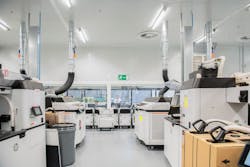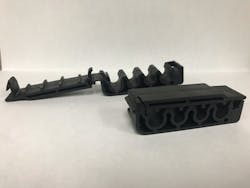Ford and Nissan Use HP 3D Printing to Address Production Sustainability
When you think about key computing technologies supporting advanced automation applications in manufacturing, Hewlett-Packard (HP) is not often the first technology supplier that comes to mind. After all, the company tends to be better known for its front office IT technologies.
However, HP has been at the forefront of a number of advanced manufacturing applications on the plant floor for some time now. For example, Foxconn’s use of HPE Pointnext services to address quality assurance issues by deploying machine learning at the edge, and the introduction of the HP Metal Jet printer for high-volume manufacturing of production-grade metal parts.
Now, both Ford and Nissan have announced new sustainability programs enabled by HP 3D printing technology.
Debbie Mielewski, Ford technical fellow, sustainability, said, “Many companies are finding great uses for 3D printing technologies, but, together with HP, we’re the first to find a high-value application for waste powder that likely would have gone to a landfill by transforming it into functional and durable auto parts.”
Nissan, Solize, and HP
At Nissan, HP’s 3D printing technology is being used in a joint effort by Solize Corp. and HP Inc. to design and manufacture 3D-printed replacement parts for Nissan’s NISMO (the motorsports and performance division of the Nissan Motor Company). HP’s Multi Jet Fusion platform is used for production of these parts. The first part identified for restoration using 3D printing is a plastic part of the harness protector for the R32 Nissan Skyline GT-R (after an initial production run from 1969-1973, the Skyline GT-R was again produced from 1989-2002). The part is produced using HP High Reusability PA 11 which reportedly provides high mechanical properties and design flexibility.
“We are seeing leaders of industry like Nissan recognize the massive cost implications of storage, molds, and logistics for replacement parts and how industrial 3D printing can help,” said Jon Wayne, head of global commercial business for 3D printing and digital manufacturing at HP Inc. “Digital manufacturing is a viable, long-term solution for accelerating production and transforming supply chains.”





